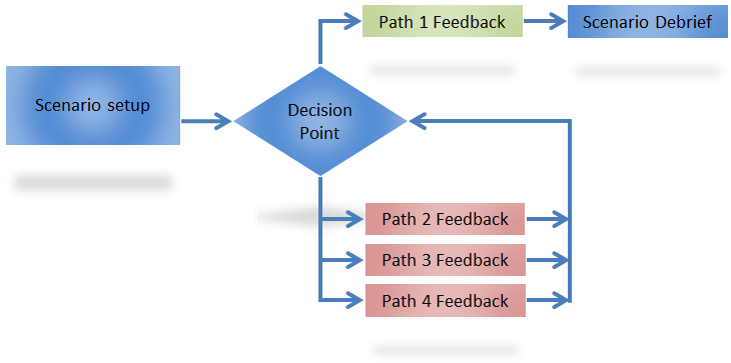You are here
Planning an E-Learning Course
Lately, we have kicked off a number of new e-learning courses for clients that are not very familiar with e-learning or instructional design. Often times these clients volunteer lots of their existing learning materials to us immediately and expect us to sift through it and work our magic. While this is somewhat understandable, a different, more direct approach works better in most cases. At IAC, we base our method on Cathy Moore's Action Mapping process. Simply put, we start by asking about the goals that have motivated the request for the e-learning course rather than immediately sorting through the initial mountain of content (AKA "the content dump") that our clients offer us without a sense of direction for it.
Here is a map of the process:
The Measurable Goal
In order to elicit the right training goals from SMEs (Subject Matter Experts) and project stakeholders, we ask targeted and sequenced questions:
- What is the primary business driver behind this training?
- Is this compliance training, performance training or both?
- If you could hope for one great thing to result from this training course, what would it be?
Questions of this type help establish a measurable goal or outcome, like "We need to cut injuries on the job in half." or "We need to increase widget sales by 10% in Q3." This way, everyone is quickly centered on the primary objective for the project.
Modifying Behavior and Creating Motivation
Ideas start to flow ith a measurable goal in mind ideas; the foundation is in place to discuss the on-the-job behaviors that must be corrected or established to meet the goal. It is amazing how consistently SMEs will open up at this stage and begin to volunteer stories and situations that can be shaped for use in the e-learning. These situations and stories are the core of scenario-based learning, a fantastic method of contextualizing content and making it relevant to learners. Scenarios can also motivate learners by putting them or a relatable character in an emotionally-charged circumstance. People form stronger memories and store them for rapid recall when emotions drive the event. These emotions can be positive or negative, like humor or fear, but the goal is to generate just enough emotion to engage the learner in a lasting way.
Practical Exercises
Not every desired behavior can be expressed in a story or scenario-based activity within an e-learning course. The best scenarios are short and sweet. I once heard an example of a scenario setup that stuck with me: "The fire alarm just went off in your building. What do you do?" One sentence sets things up and another short question challenges the learner's ability to recall and apply existing knowledge. If that knowledge doesn’t exist, the learner has to dig deeper into the content. Think about the gut reaction you had to that question and how it might motivate you to learn your company's policies and procedures related to fire safety. That's why scenario-based interactions are great not only to assess the existence of knowledge but the application of that knowledge as well.
The image below is an instructional path model showing the flow of a typical scenario-based interaction. I like to use this type of visual model when discussing e-learning activities with customers.

Performance Support Materials
Finally, we get to the point that existing materials can become relevant again. I often start this conversation with the client by saying, "Now that we know why, what, and how we are going to teach, let's talk about the materials the learner will now be motivated to seek out before they leave the training." The same materials can certainly support the content of the courseware, but we like to separate what the learner will take away from the course from what they will likely come back to when they need a quick refresher. For the latter, we tend to build a lot of job aids, quick reference guides, top 10 lists, FAQs, and more.
Results
The results we get by using this approach are remarkable. Courses tend to be shorter and more impactful. This keeps costs down, creates flexibility, and increases the chances of actually reaching meaningful objectives for the learner and the organization.
